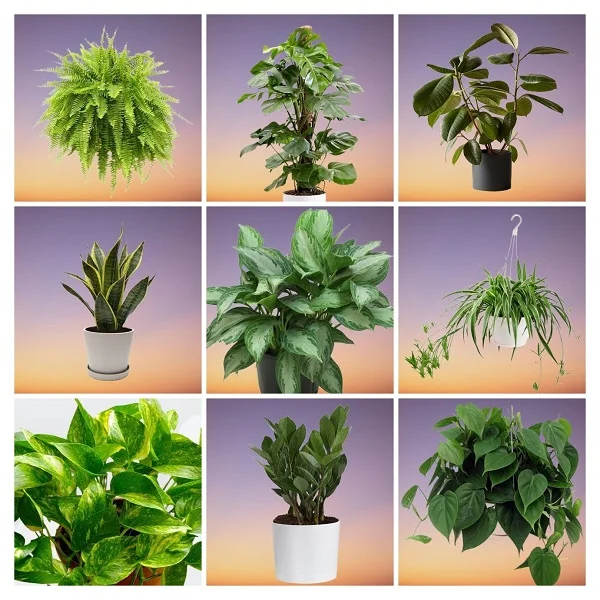21 Plants to Keep on a Study Table to Boost Concentration and Productivity
Some links in this post may be affiliate links
Plants for a study table should be small enough for the limited space on the table and able to increase productivity from their air cleaning properties and or aesthetic appeal.
Apart from adding beauty, these plants clean the air, increase oxygen concentration, improve mental health and well-being of the occupant.
The presence of plants in the indoors breaks the monotony of dull walls, gloomy rooms and other uninteresting features which makes the space more welcoming, colorful, relaxing and cozy.
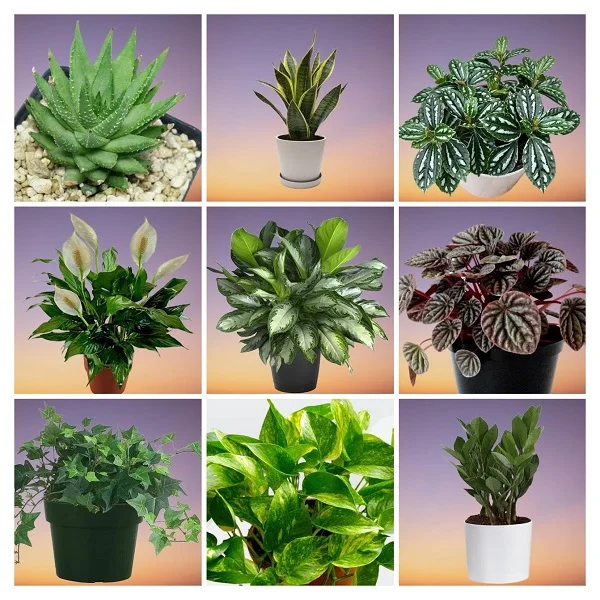
The beauty of plants emanates from their interesting, brightly colored or patterned forms of foliage plants and from the beautiful blooms of the flowers.
Our indoor air is filled with lots of hazardous gases, fumes, chemicals among others. These include dust, carbon monoxide, benzene, ammonia, formaldehyde and others which can be detrimental to our productivity.
Indoors plants have been shown to be effective in cleaning indoor air of these common volatile organic compounds (VOCs). We have outlined below 21 plants that are perfect for promoting concentration and productivity.
21 Plants Ideal for a Study Table
Plants for a study table that boost productivity are Heartleaf Philodendron, ZZ Plant, Chinese Evergreens, Spider Plant, Pothos, English Ivy, Painted-leaf Begonia, Smilax Asparagus Fern, Parlour Palm, Snake Plants, Watermelon Peperomia among others.
1. Heartleaf Philodendron (Philodendron scandens)
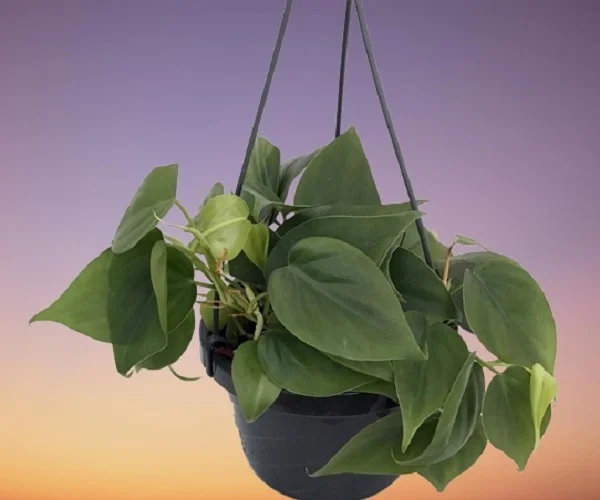
Heartleaf Philodendron also called Sweetheart Plant is one of the climbing Philodendron varieties which bears magnificent, glossy, dark-green, heart-shaped leaves and stems which can grow to 6 feet long.
Sweetheart Plant is among the most popular indoor plants and is perfect in freshening the air as it removes trichloroethylene from indoor air.
Philodendron scandens performs best in medium to bright indirect light, warmth of 18-260C, humidity of 50-55% and moderately moist, fertile, well-drained potting soils coupled with monthly feeding during the growing season.
Learn more on how to grow and care for Heartleaf Philodendron
2. ZZ Plant (Zamioculcas zamiifolia)
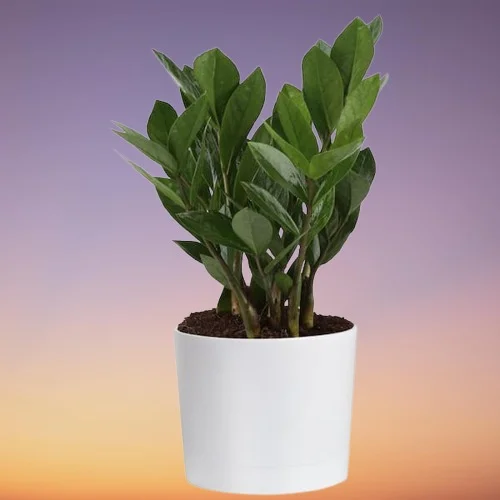
ZZ Plant also called Zanzibar Gem, Zuzu Plant, Aroid Palm or Emerald Palm is a popular plant for a study table on account of its compact size, attractive, glossy, dark-green foliage, air cleaning properties and tolerance to less than perfect growing conditions.
Zanzibar Gem grows to a height of 90 cm from a stout underground succulent rhizome. The leaves are pinnate, 40-60 cm long, with 6-8 pairs of leaflets 7-15 cm long. On account of its compact size, Zuzu Plant is one of the best plants for the limited spaces.
Zamioculcas zamiifolia prefers bright indirect light (partial shade), warmth of 15-260C, humidity of 50-55% and moderately moist, fertile succulents potting soil coupled with monthly feeding during the growing season.
Learn more on how to grow and care for ZZ Plant
3. Chinese Evergreens (Aglaonemas)

Aglaonemas are some of the popular tropical foliage plants on account of their spectacular foliage, ease of care, air cleaning properties and ability to adapt to indoor growing conditions.
Chinese Evergreens, especially the all green varities, are very tolerant to low light or shade conditions and are among the best plants for low light spaces in the homes.
Aglaonemas thrive in medium to bright indirect light, warmth of 18-270C, humidity of 50-55% and moderately moist, well-drained soils that are rich in organic matter coupled with feeding every 3-4 months in the growing season.
Learn more on how to grow and care for Chinese Evergreens
4. Spider Plants (Chlorophytum comosum)
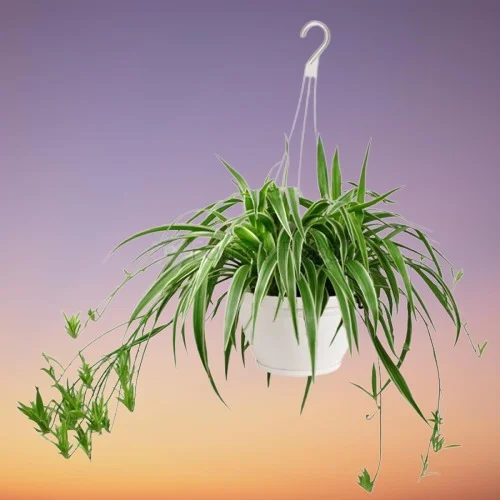
Spider Plant also called Airplane Plant, Spider Ivy or Ribbon Plant is a popular, fast-growing, air-cleaning plant for hanging baskets and is one of the easy-care plants even for beginners.
Airplane Plant is an good air-purifying plant which removes benzene, formaldehyde, xylene and toulene from indoor air and is thus a perfect plant for a study table.
hlorophytum comosum flourishes in bright indirect light, warmth of 16-240C, humidity of 50-55% and consistently moist, fertile, well-drained soil coupled with monthly feeding during the growing season.
Learn more on how to grow and care for Spider Plants
5. Pothos (Scindapsus aureus)
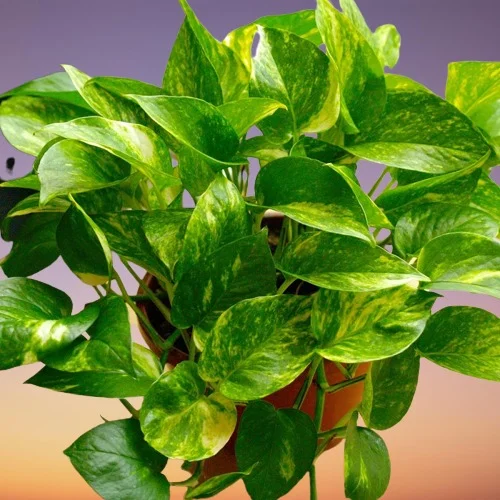
Pothos also called Devil's Ivy, Devil's Vine or Money Plant are popular Pothos plants with air purifying properties which get rid of xylene, toulene, benzene, formaldehyde and ammonia from indoor air.
Devil's Ivy are fast growing plants whose trailing stems can reach up to 6 feet or more making them some of the best plants for indoor hanging baskets.
Scindapsus aureus also called Epipremnum aureum blossom in medium to bright indirect light (filtered light), warmth of 18-290C, humidity of 50-55% and moderately moist, rich, well-drained Pothos potting soil coupled with monthly feeding in the growing season.
Learn more on how to grow and care for Scindapsus aureus
6. English Ivy (Hedera helix)
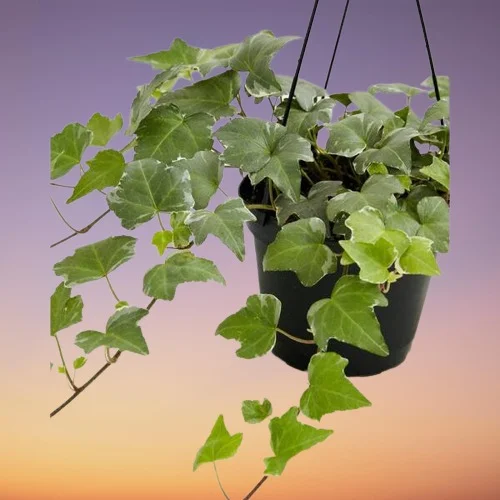
English Ivy also called Common Ivy or European Ivy is one of the best plants for a hanging baskets and comes with lobed leaves whose colors may vary from simple green to complex mixtures of white, cream, grey and yellow.
Common Ivy is a good indoor air cleaner and gets rid of benzene, formaldehyde, xylene, toulene and trichloroethylene from indoor air which makes it perfect for a study table.
Hedera helix performs best in bright indirect light, warmth of 16-260C, humidity of 50-55% and moderately moist, fertile, well-drained soils coupled with monthly feeding during the growing season.
Learn more on how to grow and care for English Ivy
7. Begonia rex (Painted-leaf Begonia)
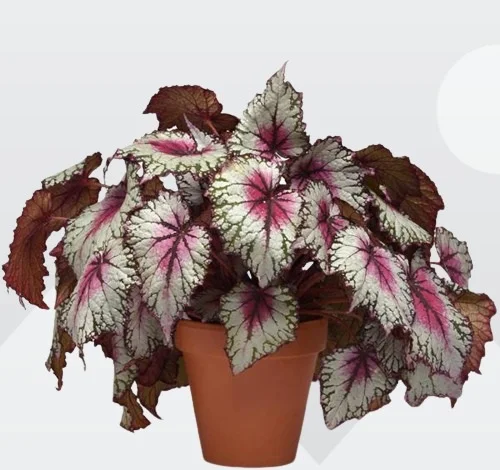
Painted-leaf Begonia also called Fancy Leaf Begonia is among the easy to grow Begonia varieties and is grown for its foliage display where the large, lop-sided, spectacular leaves occur in various hues.
Fancy Leaf Begonia has a clumping growth habit with the foliage tightly packed together. The leaves arise from rhizomes and may be ruffled, puckered, spotted, streaked, waxy, smooth and so on. It is one of the popular tropical foliage plants on account of its magnificent foliage making it perfect for a study table.
Begonia Rex prospers in bright indirect light with 4-6 hours of direct sunshine, warmth of 18-260C, humidity of 60-70% and moderately moist, fertile, well-drained potting mix coupled with fortnightly feeding in the growing season.
Read more on how to grow and care for Painted-leaf Begonia
8. Aluminium Plant (Pilea cadierei)

Aluminium Plant or Watermelon Pilea is an evergreen, small plant which bears attractive, dark-green oval leaves with raised silvery patches and is among plants that are non-toxic to both humans and pets.
Watermelon Pilea is a low-growing, compact plant which grows to a height of 1 ft only and about 18 inches wide which makes it one of the best low-light plants for the small spaces like a study table.
Pilea cadierei grows best in bright indirect light (filtered light), warmth of 18-260C, humidity of 60-70% and moderately moist, rich, well-drained soil coupled with monthly feeding during the growing season.
Learn more on how to grow and care for Aluminium Plant
9. Parlour Palm (Chamaedorea elegans)

Parlour Palm is one of the popular indoor palms which bears beautiful, dense, deep-green, feathery foliage on arching branches with a minimal outward growth.
Parlour Palm is also a good indoor air cleaner which gets rid of xylene, toulene, benzene, formaldehyde, trichloethylene and ammonia from the indoor air making it perfect for a study table to boost productivity.
Chamaedorea elegans blossoms in bright indirect light, warmth of 15-280C, humidity of 50-55% and moderately moist, rich, well-drained potting mix coupled with monthly feeding in the growing season.
Learn more on how to grow and care for Parlour Palm
10. Snake Plants (Dracaena trifasciata)

Snake Plants also called Mother-in-law's Tongue, Devil's Tongue, Jinn's Tongue, Bow String Hemp and Snake Tongue bear charming, architectural, long, narrow, succulent leaves.
The Mother-in-law's Tongue Plants are some of the hard to kill plants with reknowned air cleaning properties which get rid of formaldehyde, benzene, xylene, toulene and trichloroethylene from indoor air.
Dracaena trifasciata flourish in bright light with 6-8 hours of direct sunlight, warmth of 16-290C, humidity of 50-55% and moderately moist, loose, fertile succulents potting soil coupled with monthly feeding in the growing season.
Learn more on how to grow and care for Snake Plants
11. Peace Lily (Spathiphyllum wallisii)
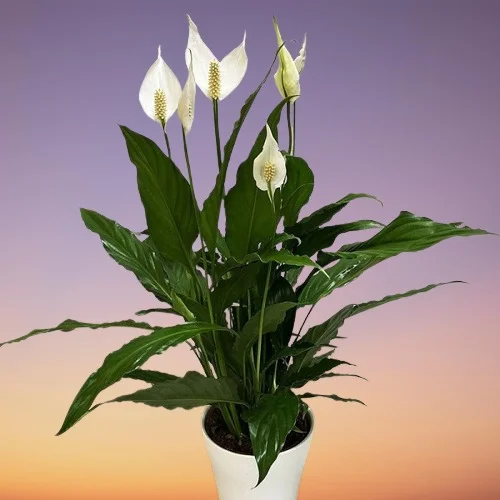
Peace Lily also called White Sails or Spathe Flower is one of the best indoor flowering plants which bears dark-green, glossy leaves and white blooms will brighten any space.
Spathe Flower is one the best air-cleaning plants which freshens the air by increasing oxygen concentration while getting rid of xylene, toulene, benzene, formaldehyde and ammonia from indoor air.
Spathiphyllum wallisii blooms in bright indirect light (filtered light), warmth of 18-260C, humidity of 50-55% and moderately moist, rich, well-drained Peace Lily potting mix coupled with monthly feeding in the growing season.
Learn more on how to grow and care for Peace Lily
12. Chinese Money Plant (Pilea peperomioides)
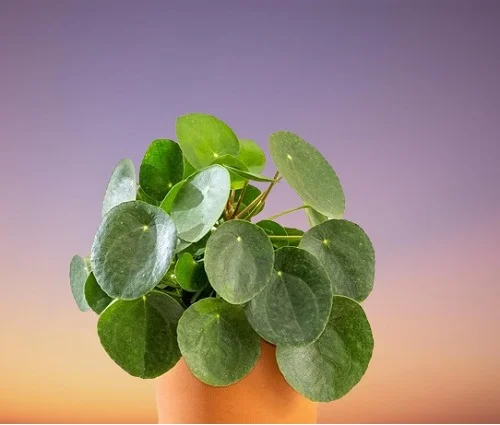
Chinese Money Plant also called Missionary Plant, Pancake Plant or UFO Plant is a low-growing plant with eye-catching, round, dark green leaves that are held on long petioles.
Missionary Plant is an erect, succulent, evergreen perennial growing to a height of 12 inches. The leaves are round, dark-green, about 4 inches in diameter and are held on long petioles. This makes it one of the best low-light plants for a study table. It is also pet-friendly and is therefore, safe to grow where there are cats and dogs.
Pilea peperomioides blossoms in bright indirect light, warmth of 18-280C, humidity of 50-55% and moderately moist, fertile succulents potting mix coupled with quarterly feeding during the growing season.
Learn more on how to grow and care for Chinese Money Plant
13. Smilax Asparagus Fern (Asparagus asparagoides)
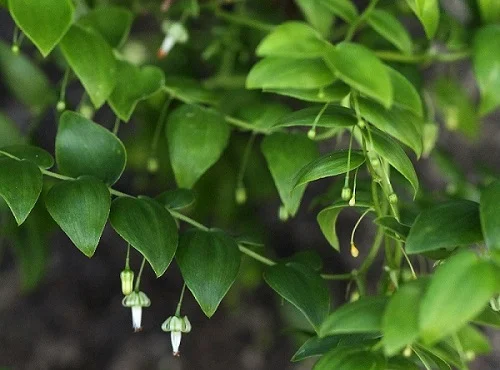
Asparagus asparagoides also called Cape Smilax, Bridal Creeper or Bridal-veil Creeper is one of the popular ornamental Asparagus plants with vigorously-growing, trailing stems clothed with shiny green leaf-like structures making this plant perfect for a study table, an office desk, a hanging basket and other limited spaces.
Bridal Creeper and its cousins Emerald Fern (Asparagus densiflorus 'Sprengeri'), Foxtail Fern (Asparagus densiflorus 'Meyeri'), Sicklethorn Fern (Asparagus falcatus) and Asparagus Fern (Asparagus plumosus) are hardy plants that easily adapt to wide variations in light, heat and watering frequency.
Asparagus asparagoides flourishes in medium to bright indirect light, warmth of 16-270C, humidity of 50-55% and moderately moist, rich, well-drained potting soils coupled with weekly feeding during the growing season.
Learn more on how to grow and care for Smilax Asparagus Fern
14. Cast Iron Plant (Aspidistra elatior)
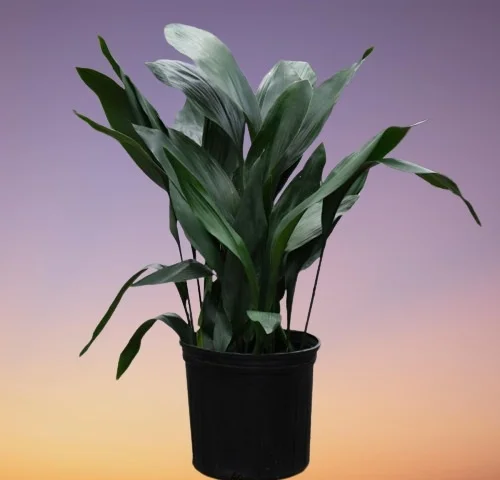
Cast Iron Plant is a compact, hardy plant with glossy, dark-green, upright leaves and easily adapts to a wide range of growing conditions and can withstand some level of neglect.
The Cast Iron Plant grows to a height of about 1.5 feet to 2.5 feet making it ideal for a study table. The leaves, are 12-20 inches long and are grouped in small tufts of 2-4 leaves which makes this plant one of the best large-leafed plants that make a bold statement in any space.
Aspidistra elatior performs best in bright indirect light (filtered light), warmth of 15-260C, humidity of 50-55% and moderately moist, fertile, well-drained succulents soil coupled with monthly feeding during the growing season.
Learn more on how to grow and care for Cast Iron Plant
15. Watermelon Peperomia (Peperomia argyreia)
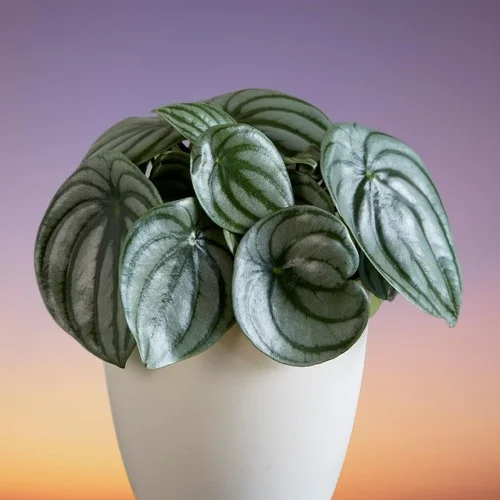
Watermelon Peperomia also called Watermelon Begonia is among the popular Peperomia varieties and bears slightly-fleshy, oval-shaped, green leaves which are marked with curved silver stripes resembling the skin of a watermelon.
Watermelon Begonia is a compact, upright, bushy plant with a minimal spread and grows to a height of about 12 inches making it perfect for a study table.
Peperomia argyreia thrives in bright indirect light, warmth of 18-250C, humidity of 50-60% and moderately moist, rich, well-drained succulents potting mix coupled with monthly feeding in the growing period.
Learn more on how to grow and care for Watermelon Peperomia
16. Echeveria desmetiana (Echeveria peacockii)
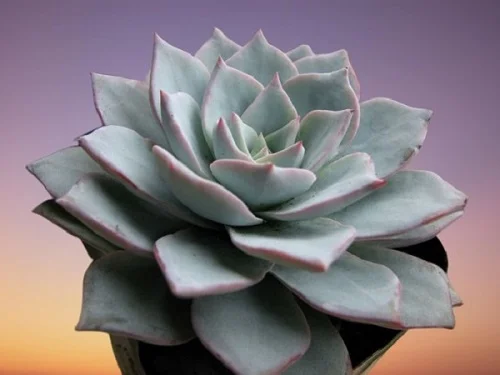
Peacock Echeveria or Mexican Peacock Echeveria is one of charming Echeveria varieties which forms a rosette of short, beautiful and tightly packed leaves on a short stem.
The leaves in Peacock Echeveria are covered with a white to bluish bloom and they have reddish margins making them a sight to behold on a study table and among the best plant gifts for Mother's Day.
Echeveria desmetiana blossoms in bright light with 4-6 hours of direct sunlight, warmth of 16-280C, humidity of 50-55% and moderately moist, succulents potting soil coupled with fortnightly feeding during the growing season.
Learn more on how to grow and care for Peacock Echeveria
17. Satin Pothos (Scindapsus pictus)
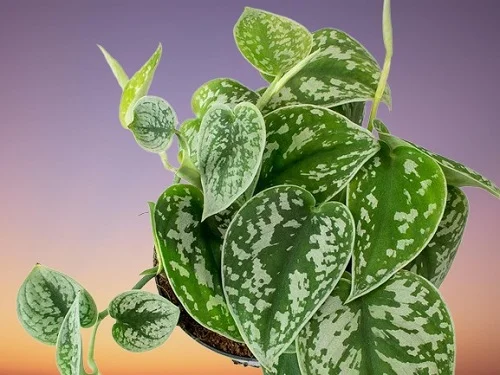
Satin Pothos also called Silver Pothos, Silver Vine or Silver Philodendron are evergreen, trailing plants which bear pleasant, matte, green leaves covered in silver blotches with a satin sheen.
On account of their ease of care, trailing habit and magnificent foliage, Satin Pothos are some of the best small low-light Plants for an office desk where they can be grown in a hanging basket.
Scindapsus pictus flourishes in medium to bright indirect light (filtered light), warmth of 15-290C, humidity of 50-55% and moderately moist, rich, well-drained potting soil coupled with monthly feeding during the growing season.
Learn more on how to grow and care for Satin Pothos
18. Aloe Plants
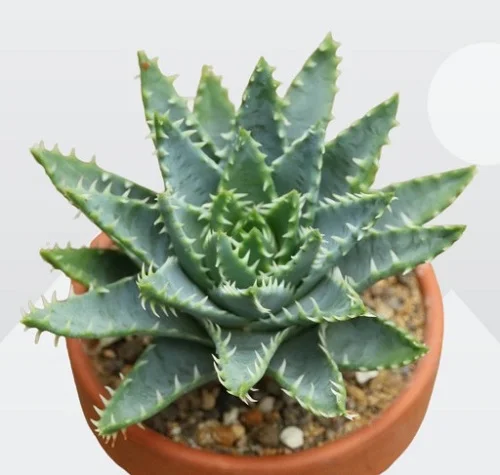
Aloes are some of the popular succulent plants grown in the home space. They form a stemless rosette of fleshy leaves and tubular, frequently yellow, orange, pink or red flowers borne on a pendant at the apex of simple or branched leafless stems.
There are over 560 species in the Aloe genus. The most popular species are Aloe barbadensis (Aloe vera or "true aloe"), Aloe aristata (Lace Aloe), Aloe variegata (Partridge-breasted Aloe), Aloe jucunda, Aloe humilis (Hedgehog Aloe) and Aloe mitriformis. Check out these Aloe succulents ideal for indoors.
Aloe Plants thrive in bright light with 6-8 hours of direct sunlight, warmth of 16-280C, humidity of 50-55% and moderately moist, rich, well-drained succulents potting mix coupled with monthly feeding during the growing season.
Learn more on how to grow and care for Aloes
19. Haworthia Plants

Haworthia Plants magnificent, succulent plants with firm, tough, fleshy leaves, usually dark-green in color while some have softer leaves with translucent panels through which sunlight can reach internal photosynthetic tissues.
The rosette of leaves in Haworthia Plants variets from 1.2 inches to 12 inches wide making them perfect for a study table and other limited spaces. Being compact, sun-loving plants, places Haworthia among the best low-maintenance plants for a sunny balcony.
Haworthia grow best in bright light with 6-8 hours of direct sunlight, warmth of 18-260C, humidity of 50-55% and slightly moist, fertile, well-drained succulents soil coupled with monthly feeding during the growing season.
Learn more on how to grow and care for Haworthia Plants
20. String of Pearls Plant (Senecio rowleyanus)
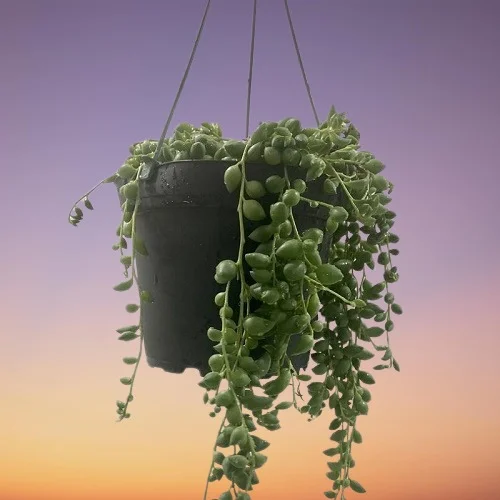
String of Pearls Plant also called String of Beads Plant is among the popular Senecio varieties which bears pendant thread-like stems on which succulent, spherical green leaves grow and it resembles a neck-lace of beads or pearls.
The succulent leaves and stems store water, which allows the String of Beads Plant to go for a considerably long period without being watered making it perfect for a beginner. It is one of the best plants with low water needs.
Senecio rowleyanus thrives in bright light with 6-8 hours of direct sunlight, warmth of 20-270C, humidity of 50-55% and moderately moist, fertile, well-drained succulents potting mix coupled with monthly feeding in the growing season.
Learn more on how to grow and care for String of Pearls Plant
21. Arrowhead Plant (Syngonium podophyllum)
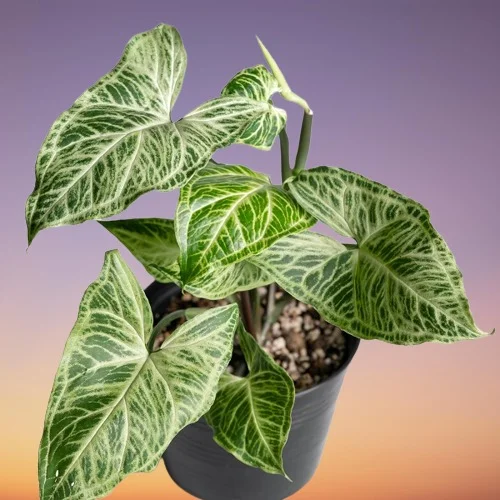
Arrowhead Plant also called Goosefoot Vine, Arrowhead Vine, African Evergreen, Arrowhead Philodendron, American Evergreen or Nephthytis bears interesting leaves which dramatically change in shape as the plant ages.
Arrowhead Vine has many variegated cultivars with the main difference being in the position and extent of the cream or white markings. Some leaves are almost entirely white, pink or yellow. Check out these spectacular Syngonium varieties.
Syngonium podophyllum blossoms in bright indirect light (dappled light), warmth of 15-280C, humidity of 50-55% and consistently moist, rich, well-drained potting soils coupled with monthly feeding in the growing season.
Learn more on how to grow and care for Arrowhead Plants
